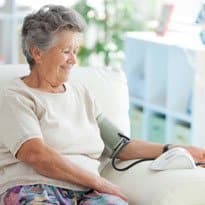Surrey takes telehealth
- 21 August 2013

Six Surrey clinical commissioning groups are deploying a managed telehealth service, commissioned by Surrey County Council.
One CCG has gone live with a patient on the service provided by Medvivo and has another nine in the pipeline.
The council’s assistant senior manager – commissioning, Pauline Jervis, told EHI the project is being paid for by whole systems partnership funding. This is allocated to the council and assigned via a steering group to support people with long-term conditions.
The council conducted a Surrey-wide procurement for the service with the old primary care trusts and Medvivo was announced as the winner early this year.
Surrey’s six CCGs are on board with the programme, but are rolling it out in slightly different ways. All CCGs plan to be live with telehealth by the end of the year.
“We estimate we should be able to use about 1500 units over a three year period,” Jervis said.
“It’s a framework agreement so what we spend will depend on the deployment of units. We are purchasing a managed service, not just equipment.”
Jervis said she planned to draw down 30 units at a time, “because we don’t want units sitting around in cupboards”.
“I expect deployment to be slow to start with and to really gather momentum next year.”
Patients can be referred by community matrons, specialist nurses or GPs, but anyone in their care pathway could identify them as potentially benefiting from telehealth.
Each patient will have a home pod, which Jervis describes as similar to an iPad, and any extra equipment depending on their needs such as for reading blood pressure or taking a pulse.
A team of Medvivo nurses will monitor the readings sent from the telehealth devices and if necessary, alert a named clinician.
Jervis acknowledged that there are differing levels of enthusiasm in the CCGs, but each has one or more clinical lead championing use of telehealth.
The council and commissioners have invested in telehealth because they believe it can make health and social care sustainable in the future when faced with an ageing population and a rising number of people with long-term conditions.
“It’s difficult to know whether we will actually save money, but we will be doing some evaluation looking at what happened to the patient before they went on to telehealth and afterwards,” Jervis explained.
It also fits with the patient satisfaction and empowerment agenda, helping people to better manage their own condition.




